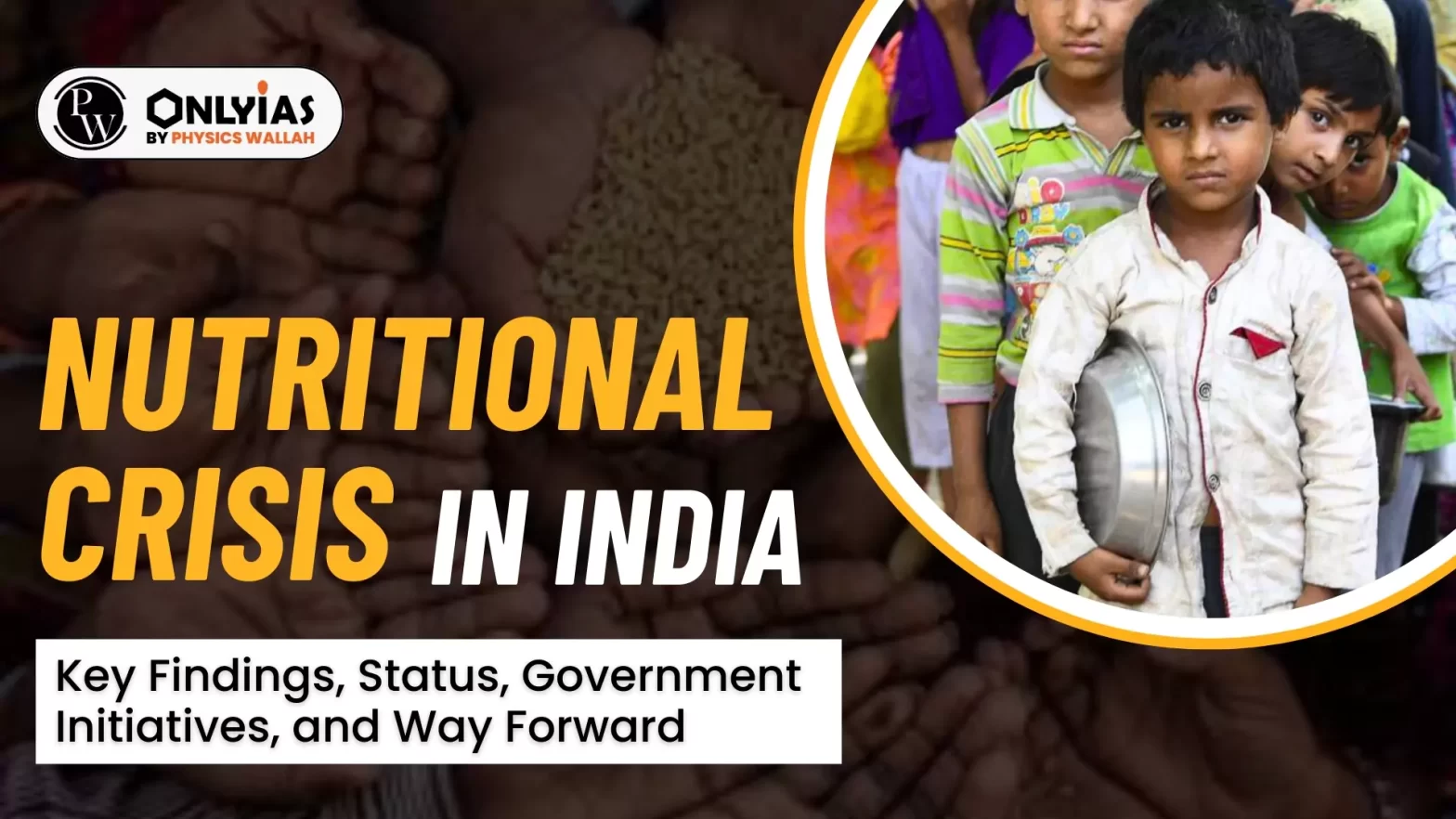![]() 11 Mar 2024
11 Mar 2024

This editorial is based on the news “Nutritional crisis: India has most ‘zero-food’ children at 6.7 million; third highest prevalance among 92 LMICs” which was published in the DownToEarth. Recently, India has ranked poor in a study calculating the prevalence of Zero Food Children across 92 low and middle income countries (LMIC).
| Relevancy for Prelims: Nutritional Security In India, Food Security, Nutrition Security, World Food India 2023, State Of Food And Agriculture Report 2023, Farm And Food Policy Shift, and Malnutrition In India.
Relevancy for Mains:Nutritional Crisis in India: Key Findings, Status, Government Initiatives, and Way Forward. |
|---|
Nutritional Crisis in India: Key Findings
Nutritional Security in India: Current Status
|
|---|
The research was published in the journal JAMA Network and looked at 276,379 babies aged six to 23 months in 92 LMICs.
| Prelims PYQ (2017):
Which of the following are the objectives of ‘National Nutrition Mission’? 1. To create awareness relating to malnutrition among pregnant women and lactating mothers. 2. To reduce the incidence of anaemia among young children, adolescent girls and women. 3. To promote the consumption of millets, coarse cereals and unpolished rice. 4. To promote the consumption of poultry eggs. Select the correct answer using the code given below: (a) 1 and 2 only (b) 1, 2 and 3 only (c) 1, 2 and 4 only (d) 3 and 4 only Ans: (a) |
|---|
| Mains Question: Examine the underlying causes of malnutrition in India and propose comprehensive strategies to address this challenge effectively. (10 marks, 150 words). (15 Marks, 250 Words) |
|---|
| Must Read | |
| NCERT Notes For UPSC | UPSC Daily Current Affairs |
| UPSC Blogs | UPSC Daily Editorials |
| Daily Current Affairs Quiz | Daily Main Answer Writing |
| UPSC Mains Previous Year Papers | UPSC Test Series 2024 |

<div class="new-fform">
</div>